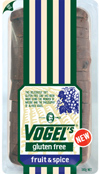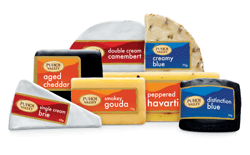By Les Watkins
Food producers who fail to invest time and money in research and development, who ignore customers’ wishes for new taste sensations, risk becoming history within 10 years.
That warning comes from Peter Reidie the recently-appointed New Zealand managing director of Goodman Fielder – our biggest food and beverage company with annual sales topping $1 billion.
That is why Mr Reidie is dedicated to growing Goodman Fielder nationally as well as internationally and talks enthusiastically about pouring millions into research.
“You have to innovate to survive,” he says.
“Tastes and attitudes are changing and food manufacturers need to adapt. Those who do so successfully will win and those who don’t won’t be with us in 10 years’ time.”
Mr Reidie was Goodman Fielder’s dairy and meats chief until being promoted to the helm when the company’s three semi-autonomous New Zealand
divisions were merged in October. As a dedicated rugby fan from Southland, he takes pride in describing his Goodman Fielder team as “the All
Blacks of the food industry”.
It is a 3000-strong team in 18 plants throughout the country. He also uses a rugby reference when stressing the value of research and development.
“No-one wants to watch a previous All Black test over and over again. Yes, they’ve enjoyed it but they also want to see a new and exciting one. Well, it’s the same with food consumer needs.”
Mr Reidie says that this year will be as tough and “character building” as 2011 which, financially, was hardly joyful for Goodman Fielder. But he is facing 2012 with levelheaded confidence, largely bolstered by the successes of his R&D team.
Their research, he feels, has given the company a deeper understanding of consumer preferences than that of most of its competitors.
“And, obviously, if you know what makes the punters tick – know what appeals to them in terms of trends and tastes – you can place yourself well to meet their needs,” he says.
However, the comparative smallness of the domestic market makes the investment required for in-depth R&D a major issue. One of the ways to meet that challenge is to ensure that R&D also boosts exports – a challenge Peter Reidie is looking forward to with relish.
“Yes, the opportunities for growth are certainly there,” he says.
“We have to keep looking for how to change the game, offering different choices to our customers here and overseas and play to win. And that is exciting.”
Now the company has one expanded R&D department, in place of the three operating before the merger, and R&D director Paul Harris considers this is far more effective.
“You get the knowledge being shared right across the group,” he says.
“Our food technologists who are specialists in their own fields – in baking, dairy, meat and home ingredients – are in a better position to cross-pollinate ideas.”
Measurable evidence of the benefits of R&D investment is seen in the soaring success of the first gluten-free Vogel bread introduced by Goodman 
“Part of the rationale for the launch was the increasing demand for glutenfree products with more people being diagnosed as coeliacs,” says Mr Harris.
Coeliac disease is an auto-immune disorder of the small intestine which is exacerbated by gluten.
“We spent 18 months working on this bread before it was launched,” says Mr Harris.
“One of the key things that came out of our research was that gluten-free consumers have a strong desire to be seen as normal like everyone else. They dislike being considered different.
“There was also a lack of good-tasting gluten-free bread on the market. Most of it was dry and crumbly and people were saying they’d rather go without.
“So we knew we had to create a loaf that was soft and moist and that would stay fresh. And it needed to be right for sandwiches.”
Success was confirmed by a blind test involving Colmar Brunton with 84 percent of participants preferring the Vogel bread to its competitors. But a problem was struck when the trial was up-scaled from the test bakery to the production plant – the bread was so soft and moist that it gummed up the blades.
“We solved that by putting a foodgrade lubricant on the blades,” says Mr Harris.
“That stopped the bread sticking to them.”
The new loaf increased sales of gluten-free bread by 40 percent within 12 weeks of being launched. By then it had also secured 50 percent of total market share.
“And consumer feedback has been brilliant,” says Mr Harris.
“For example, we’re getting letters from children thanking Vogel for enabling them to take sandwiches to school just like their classmates.
“That hadn’t been possible before and they’d really disliked standing out as different. So that’s an example, you might say, of how we’re changing lives in a positive way – something that makes us absolutely proud.”
Another example of how R&D influences eating patterns is provided by the Puhoi Valley speciality mini cheeses which the company launched in August. Their introduction was inspired by the realisation that – mainly because of size and price – customers were tending to buy speciality cheeses only when entertaining.
“They weren’t wanting to put a halfeaten piece back in the fridge because it would dry out,” says Mr Harris.
“So we came out with the mini versions, predominantly about the 140 gram mark instead of about 300 gram, which would be the perfect size for a couple.
They could be enjoyed without wastage, for instance, as a mid-week treat by mum and dad.





























































































